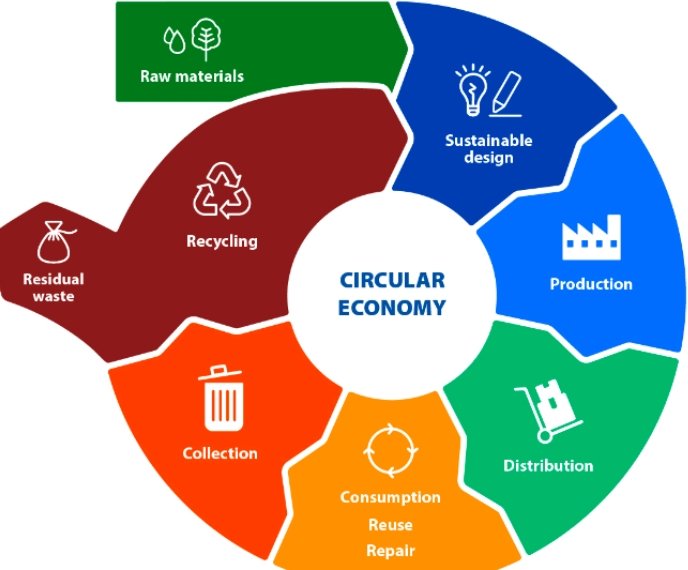The Scottish Government has unveiled its Circular Economy and Waste Route Map to 2030, setting a clear roadmap for transitioning to a circular economy. This comprehensive plan outlines 11 priority actions and implementation timelines aimed at waste reduction, recycling modernisation, and sustainable resource management. These efforts directly support the Circular Economy (Scotland) Act 2024, passed earlier this year.
Key Highlights of the Circular Economy Route Map
The Route Map, developed after consultations in 2022 and early 2024, focuses on four strategic aims:
- Reduce and Reuse: Promoting sustainable consumption and resource efficiency.
- Modernise Recycling: Enhancing recycling systems and services.
- Decarbonise Disposal: Shifting to cleaner, more sustainable waste management practices.
- Strengthen the Circular Economy: Building a robust, circular economy through innovative policies and collaborations.
Gillian Martin MSP, Acting Cabinet Secretary for Net Zero and Energy, highlighted the significance of the Circular Economy (Scotland) Act 2024, emphasizing its alignment with the country’s broader sustainability goals. The new legislation aims to foster a circular economy by prioritizing sustainable production, consumption, and resource management.

Priority Actions and Implementation Timeline
The Route Map outlines 11 priority actions, all designed to be delivered within the current fiscal constraints. Key actions include:
- Product Stewardship Plan (2025/26): Focusing on the environmental impact of products, with textiles and mattresses as possible initial priorities. Textiles, which make up 4% of household waste, contribute nearly 32% of Scotland’s carbon impact from waste.
- Household Food Waste Reduction Plan (2026/27): Households contribute to 60% of Scotland’s food waste, and the government aims to reduce this through a series of targeted measures. Scotland discards around 111kg of food per person annually, generating an equivalent of 2.3 million tonnes of CO2. This plan will work with partners such as Zero Waste Scotland, WRAP UK, and Local Authorities to implement effective interventions.
- New Material-Specific Targets by 2027: Moving away from general waste tonnage targets, the government plans to set targets based on specific materials, as recommended by the Climate Change Committee. This shift reflects the fact that much of Scotland’s carbon footprint stems from the products and services consumed.
Modernising Recycling Services
The Route Map places a strong emphasis on modernising recycling services. Plans are in place to co-design high-performing, sustainable household recycling systems between 2024 and 2026, which will inform a statutory Code of Practice. This marks a move away from voluntary guidelines.
In addition to household recycling, the commercial recycling sector will undergo a review by 2026, aiming to improve service compliance and effectiveness. Zero Waste Scotland will play a key role in both household and business-level waste management initiatives.
Decarbonising Waste Disposal
The Scottish Government is also tackling the decarbonisation of Energy from Waste (EfW) facilities. Two critical strategies are set for publication by 2027:
- Residual Waste Plan: This comprehensive strategy will guide waste management until 2045 and will include an assessment of Scotland’s Energy from Waste capacity.
- Sector-Led Decarbonisation Plan: This plan, targeting EfW facilities, will focus on eliminating unnecessary plastic incineration and incorporating carbon capture technology.
These plans will be supported by Scotland’s participation in the Emissions Trading Scheme, set to include EfW by 2026.
Addressing Construction Sector Waste
The construction and demolition sector generates nearly half of Scotland’s total waste. To tackle this, the Route Map includes plans for regional reuse hubs for construction materials. These hubs will allow for the storage, sale, and reuse of building materials, significantly reducing waste in the sector.
The Scottish Government will also focus on building refurbishment over new construction and investigate sustainable procurement practices to improve material efficiency. Public sector construction, which makes up more than half of Scotland’s construction spending, will be instrumental in implementing these changes.
Implementation and Monitoring
The Route Map will be updated every five years, with a new strategy to be published by 2026. This will include new circular economy targets, moving beyond traditional waste tonnage metrics to material-specific ones. The new targets will be based on detailed data tracking, supported by a monitoring framework to track progress toward a circular economy.
The government is also investing in education and workforce development to embed circular economy principles across Scotland. This will create employment opportunities and strengthen Scotland’s growing circular economy sector, which already supports one in 10 jobs.
A Path Towards a Sustainable Future
The Scottish Government’s Circular Economy Route Map represents a comprehensive plan to reduce waste, increase recycling, and ensure sustainable resource management across the country. By aligning policies with environmental goals, Scotland aims to lead the way in circular economy practices, contributing to the fight against climate change while promoting economic growth.


















